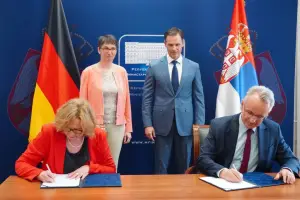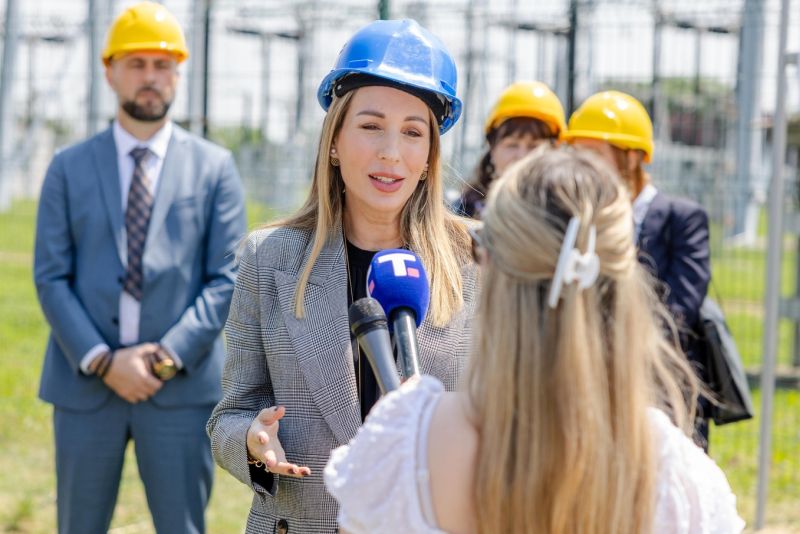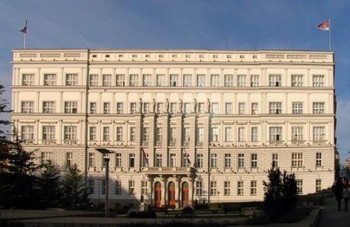- Serbia
Get to know Serbia
- Citizens
Culture and science
Health services
Pension and disability insurance
- Business
Employment
Economy
- Media
- Government
- Contact
Keep in touch
Contact form
Back
Keepin touch
Whether you have a question, comment, suggestion or any problem in the purview of the government, send us your message and we will try to respond as soon as possible. If your problem is not in our purview, we will forward your message to the relevant institution.
Q:
A:
“S&P Global Ratings” increases credit rating of Serbia
Belgrade,
15 December 2017
The Ministry of Finance stated tonight that the rating agency “Standard and Poor's” has improved the credit rating of the Republic of Serbia to the level of BB, with stable prospects for improving the credit rating.
The statement said that the agency estimates that GDP will continue to grow between 2018 and 2020, and that growth will be based primarily on the inflow of foreign direct investment and higher private consumption that will be driven by increased employment, wages and stable inflow of remittances.
“Standard and Poor's” expects economic progress to strengthen government efforts to continue fiscal reforms and good fiscal results in 2018, when a deficit of only 0.6 percent of GDP is expected.
Despite the expected increase in public sector wages in 2018, the average fiscal deficit is expected to be about 1.5 percent on average over the period from 2017 to 2020.
The freezing of salaries and pensions, as well as the gradual reduction of subsidies to public enterprises, resulted in an impressive adjustment of about 4 percent of GDP between 2014 and 2017.
The country's deficit shrank to 1 percent of GDP in 2017 compared to 6.6 percent of GDP in 2014, and a positive trend in foreign trade is also noticed.
The agency estimates that the current account deficit, which in the period from 2011 to 2014 amounted to 8.7 percent of GDP, will be on average at the level of 4.1 percent of GDP in the period from 2017 to 2020, which will be mostly influenced by the existing foreign investment in production activities, as well as improving competitiveness in the manufacturing sector and the service sector.
In addition to reducing the current account deficit, “Standard and Poor's” rating agency expects an improvement in the structure of external debt, and that the net inflow of foreign direct investments will fully cover the current account deficit in the coming period, the statement said.
“Standard and Poor's” expects economic progress to strengthen government efforts to continue fiscal reforms and good fiscal results in 2018, when a deficit of only 0.6 percent of GDP is expected.
Despite the expected increase in public sector wages in 2018, the average fiscal deficit is expected to be about 1.5 percent on average over the period from 2017 to 2020.
The freezing of salaries and pensions, as well as the gradual reduction of subsidies to public enterprises, resulted in an impressive adjustment of about 4 percent of GDP between 2014 and 2017.
The country's deficit shrank to 1 percent of GDP in 2017 compared to 6.6 percent of GDP in 2014, and a positive trend in foreign trade is also noticed.
The agency estimates that the current account deficit, which in the period from 2011 to 2014 amounted to 8.7 percent of GDP, will be on average at the level of 4.1 percent of GDP in the period from 2017 to 2020, which will be mostly influenced by the existing foreign investment in production activities, as well as improving competitiveness in the manufacturing sector and the service sector.
In addition to reducing the current account deficit, “Standard and Poor's” rating agency expects an improvement in the structure of external debt, and that the net inflow of foreign direct investments will fully cover the current account deficit in the coming period, the statement said.
-
 Belgrade, 27 June 2025
Belgrade, 27 June 2025Double Taxation Avoidance Agreement with Germany signed
-
 Kostolac, 25 June 2025
Kostolac, 25 June 2025Construction of Kostolac wind farm nearing completion
-
 Belgrade, 24 June 2025
Belgrade, 24 June 2025Government supports request for new postponement of sanctions against NIS
-
 Belgrade, 23 June 2025
Belgrade, 23 June 2025Procedures to facilitate sale of Serbian products to China to be accelerated
-
 Belgrade, 21 June 2025
Belgrade, 21 June 2025Serbia receives first funds under Growth Plan for the Western Balkans
-
 Belgrade/Cairo, 20 June 2025
Belgrade/Cairo, 20 June 2025New phase in relations with Egypt in field of agriculture
-
 Belgrade/Athens, 18 June 2025
Belgrade/Athens, 18 June 2025Serbia’s leadership position in power sector
-
 Obrenovac, 10 June 2025
Obrenovac, 10 June 2025Trans-Balkan Corridor most important project for electricity transmission in region
-
 Belgrade, 4 June 2025
Belgrade, 4 June 2025Improving business climate in agricultural, food sector


